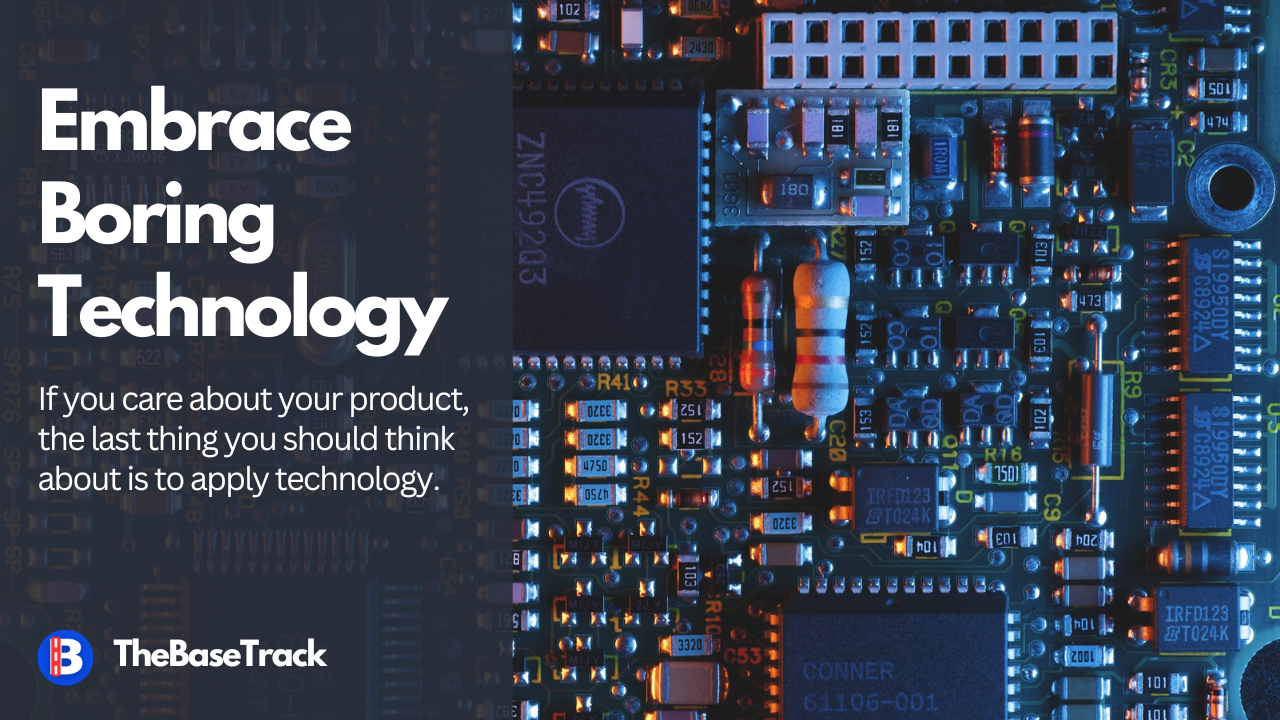Embrace boring technology to make better product

The bed of Procrustes
Back in the time, in the land of Attica, there lived a notorious robber named Procrustes. He was known for his iron bed, which he used to invite travelers to spend the night. The bed was of a certain size, and according to the size of the traveler, he either stretched them or cut off their limbs to fit the bed. The travelers who were too short for the bed were stretched until they fit, while those who were too tall had their limbs chopped off.

👉 Though it is not clear what motivated Procrustes to commit these wicked acts, the myth of Procrustes’ bed is often used as a metaphor for the imposition of a standard or conformity, regardless of individual differences.
The Pitfall of Naive "Trend-Seeking" Technologists
In contemporary society, the strict enforcement of laws, such as those upheld by the police, courts, and prisons, prevents heinous cases like Procrustes from occurring.However, modern-day Procrustes take on a more insidious form as naive technologists. These individuals construct technology to fit reality into preconceived notions and frameworks, rather than allow society to shape their thinking.For example:
- The Ten Most Ridiculous Things "On the Blockchain"
- 10 Stupid Gadgets That We Can't Believe Exist (businessinsider.com)These technologists create products that the market ceases to understand why it exists.👉 The truth: Technology was born to conform to the market, not the other way.
Embracing Organic Technology
If you care about your health, the last thing you have to think about is to see the doctor. If you care about your product, the last thing you should think about is to apply technology. The most valuable technologies are born precisely when they are needed to address urgent and pressing market demands:
- A recent tech: ChatGPT was born just in time to solve the information overload and synthesize large amounts of data
- A mobility tech: Grab & Uber was born at just the right time to solve the inefficient
- A disruptive tech: Oppenheimer built the nuclear bomb just in time to serve the demand of bombing
While the technology itself may be new, the underlying human problems it solves, such as mobility challenges in the case of Grab, have persisted for years, if not centuries.
👉 If you care about your product, start with the market first, and try to understand the underlying problems of humans, then use proven or perhaps boring technology to validate problems, then iterate.
The rationale: As I mentioned in my previous blog post “Technology is all about cutting costs (patrickphat.com)”, the most convincing explanation I have for now is that we’re living in a material world. People use technology as a leverage to achieve higher productivity, meaning higher yields and lower costs.
The Power of Boring Technology
Your job - as a technologist should be like what this guy Coda says here:
When you prioritize understanding the business problem and gain a deep comprehension of it, you will discover that the solution is often straightforward. Most problems do not require overly complex technology to solve.
- ChatGPT, while new, builds upon decades of study in natural language processing.
- Grab & Uber leveraged the Google Maps API and years of app design expertise.
It is useful for two reasons:
- Efficiency: Higher yields, lower cost
- Tail risk is managed: the failure modes of this technology are well-understood
👉 Upon closer examination, you'll find that the majority of useful tech products are built on simple (and perhaps mundane) technology.💬Disclaimer: While exciting and recent technology can hold value and utility, the chances are smaller compared to older and more established technologies, in accordance to the Lindy’s effect.
What's the Bottom Line?
This post holds value in a specific context: to challenge the glorification of trendy technology and underscore the usefulness of longstanding and stable technology.From time to time, I endorse risk-taking technologists who venture into new technologies, learn from mistakes, validate market problems, and employ technology precisely when it is needed to address urgent market needs.👉 Return on investment (ROI) is what truly matters.




